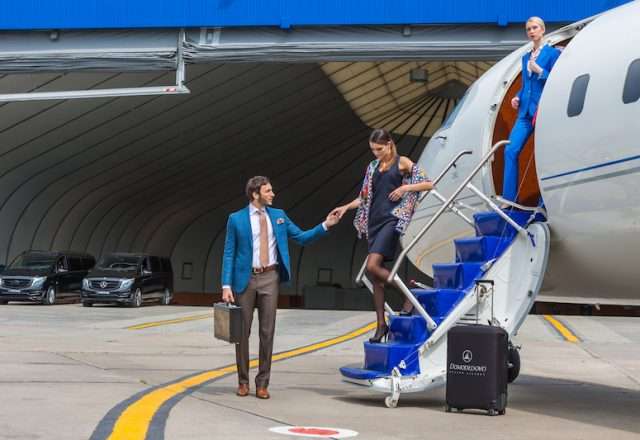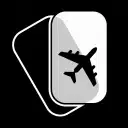Wet Lease vs. Dry Lease: What’s the Difference?
At Stratos Jet Charters, Inc, We know the aviation industry.
Some of the terms frequently used in our field can take some getting used to. However, we know that gaining knowledge empowers people to save money and make informed buying choices. That’s why educating our clients is one of our top priorities.
In this article, we explain the difference between aircraft leasing and private jet charter and discuss exactly how it affects you. Specifically, we focus on dry leases vs. wet leases and what separates these two options.
What Makes Operators Lease Aircraft?
Explaining the differences between a dry lease and wet lease of aircraft starts with a clear understanding of what an aircraft lease is in general.
In layman’s terms, leasing simply means transferring an aircraft without transferring its title. The owner (or, in the language of aircraft leasing, the lessor) keeps the legal title but possession transfers to the lessee.
So, why would an operator want to lease an aircraft?
Capacity
The first reason to lease is to secure the ability to temporarily increase capacity. Commercial airlines do this even more often, but charter jet operators can also run into the need for additional capacity.
Money
There’s another clear reason to lease, as well: finances. Purchasing an aircraft can be challenging for numerous reasons, from practical to financial.
Leasing is an attractive option that lets operators forgo the financial stress of an actual purchase. This isn’t at all surprising. However, this can also cause a problem in the event that a lease is arranged to circumvent FAA regulations and rules.
Wet Lease vs. Dry Lease of Aircraft
In the charter industry, the FAA regulates two main types of aircraft leases:
- Dry lease
- Wet lease
What’s the difference between a dry and wet lease?
A wet lease means that the organization or person who owns the aircraft will provide that aircraft as well as one or more crew members to the lessee, the FAA explains. Even more important, the owner also promises to conduct adequate maintenance and procure the insurance necessary to operate. In essence, the lessee has access to an insured, well-maintained, and crewed aircraft.
No possession of the aircraft occurs under the terms of a wet lease, which makes it an exception to a typical lease. Under a wet lease, the lessor has operational control.
Unless an exemption exists, a wet lease signals the need for an FAA commercial operating certificate. A wet lease is a normal part of a compliant Part 135 operation, while leased aircraft shared under Part 91 generally involve dry leases.
A dry lease (which is not a term that the Federal Aviation Regulations defines) is slightly different: The owner still provides the lessee with an aircraft without crew.
Does a wet lease include fuel?
There’s a common misconception that because fuel is “wet,” it’s included in a wet lease. However, that’s false. While aircraft fuel is indeed a liquid, that’s beside the point.
The regulations set in place by the FAA, as well as information clarifying the wet lease and dry lease of aircraft, don’t mention fuel. Inclusion of fuel, or lack thereof, is not a consideration when comparing a wet lease vs. dry lease.
The Legalities of Private Jet Charters
Problems can occur when operators share aircrafts as a cover for chartering that aircraft without needing to adhere to a Part 135 certificate. This arrangement circumvents FAA regulations through an operator dry leasing the aircraft through a company within its own control.
The operator then provides the lessee with pilots through a distinct company that’s also under their control. In a nutshell, the operator provides a wet lease but skirts the responsibility of insurance, maintenance, and other requirements of a Part 135 charter. Some may call this smart or even sneaky, but it’s not legal.
Legal Jet Charters vs. Illegal Jet Charters
Current regulations dictate that the lessee (or user) needs to maintain the right to choose a crew independently in a dry lease. Any “transportation package” (in which the same party offers a dry lease simultaneously with a separate pilot services agreement) is considered an illegal jet charter by the FAA.
Indeed, the FAA has taken the issue even further, saying that a plan might not be legal if the party leasing the aircraft at all dictates the use of a certain crew, even if no connection exists, financial or otherwise.
So what does that mean? Simply put, if it fails to adhere to these regulations and rules, your private jet charter is illegal. This is the most important thing to know when comparing a wet lease vs. dry lease.
It is vital that you are familiar with this subject. If you choose this type of flight, the insurance, safety standards, crew training and qualifications, and more are not verified or guaranteed. A dry lease is a risk. The crew has virtually no experience requirements and the aircraft maintenance history is unknown.
Stratos Jet Charters, Inc.: Integrity and High Standards
We’ve been a part of the private aviation industry for nearly twenty years, and during that time, we’ve seen a lot.
We strongly believe that when you charter a private jet, you deserve to get the best possible return on your investment. You should fly on only the safest aircraft that best suits your charter flight needs.
At Stratos Jet Charters, Inc., we work exclusively with Part 135 aircraft operators who have been thoroughly screened by top-notch auditors (Wyvern and ARG/US) to make sure the operation is as safe as possible.
Additionally, we insist upon in-house flight crew experience and insurance requirements for all our vendors through the Stratos Jets Approved Vendor Program. We take pride in educating our clients about their operator, and we continuously stay up to date on our vendor’s performance and progress on every single charter flight.
Looking to Lease a Private Jet? SJM Provides Aircraft Leasing Services
Interested in Leasing?
Are you ready to book your Los Angeles to London charter flight yet?
Our friendly, expert air charter agents are here to answer questions or start your quote today. Don`t wait, call now and we'll get you on your way to your destination!
Call 888-593-9066











